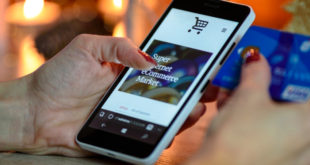PCR rounds up some of the latest stats and analyst reports from the past few weeks.
PC game market to reach $40bn by 2020 – DFC
Industry analyst firm DFC Intelligence has forecast the global market for games on personal computers will grow from $30 billion in 2015 to over $40 billion by 2020.
The greatest growth is expected to be in Asia and emerging markets, but the established markets in Europe and North America are also seeing strong growth driven by high-end games, virtual reality systems and the emergence of eSports.
Virtual reality is expected to be a core driver for high-end PC game growth, even products that are not VR-based. David Cole, CEO of DFC Intelligence, said: "The demand for high performance hardware that can power cutting edge game content has already started to accelerate substantially, as consumers want to have a system able to play the latest content.”
The new report is called the PC Game Market: Asia, North America and Europe.
Tablet shipments continue to fall – Canalys
The worldwide tablet market fell an additional 16 per cent in Q2 2016, as shipments dropped to their lowest point in three years. 35 million tablets shipped in Q2, as Apple managed to increase its share to 28 per cent at the top of the market.
Samsung continues to occupy the second spot, shipping almost six million units for a 16 per cent share of the market. Lenovo and Huawei took the third and fourth spots, with both shipping just over two million units and taking seven per cent and six per cent market share respectively.
Android shipments suffered the biggest hit, falling some 23 per cent globally, as volumes were impacted by significant declines in many Asia Pacific and Latin American markets.
"Competition from smart phones and, more recently, convertible two-in-one PCs has resulted in the weakness we currently see in the consumer segment, particularly cheap slate tablets running Android," said Wilmer Ang, Canalys research analyst.
Smart wearables take 2016 by storm – GfK
GfK has found that alert detectors (including smoke and carbon monoxide detectors, which link to mobiles via Wi-Fi), have seen growth of 114 per cent year-on-year for the past six months, with 83 per cent of sales occurring online.
Another standout performer in this category is smart lighting, which is up 181 per cent on the first six months of 2015. This product group saw an increase in the number of selling brands but an overall drop in average price.
Smart wearables are another segment of the burgeoning ‘connected’ market, with smart watches growing 359 per cent for the January to June period. Fitness trackers are also up 111 per cent in that time.
The average selling price (ASP) for smart wearables rose from £105 in 2014, to £126 in the first six months of 2016, with new products launching with greater functionality at higher price points.
Semiconductor spending to decline – Gartner
Worldwide semiconductor capital spending is projected to decline 0.7 per cent in 2016 to $64.3 billion, according to Gartner. This is up from the estimated two per cent decline in Gartner’s previous quarterly forecast.
"Economic instability, inventory excess, weak demand for PCs, tablets, and mobile products in the past three years has caused slow growth for the semiconductor industry.
"This slowdown in electronic product demand has driven semiconductor device manufacturers to be conservative in increasing production,” said David Christensen, senior research analyst at Gartner.
“Looking ahead, it appears that the second half of 2016 may see improved demand. However, following Brexit, semiconductor inventory levels may rise in the third and fourth quarters, which could lead to reduced production volumes.”
 PCR Tech and IT retail, distribution and vendor news
PCR Tech and IT retail, distribution and vendor news




